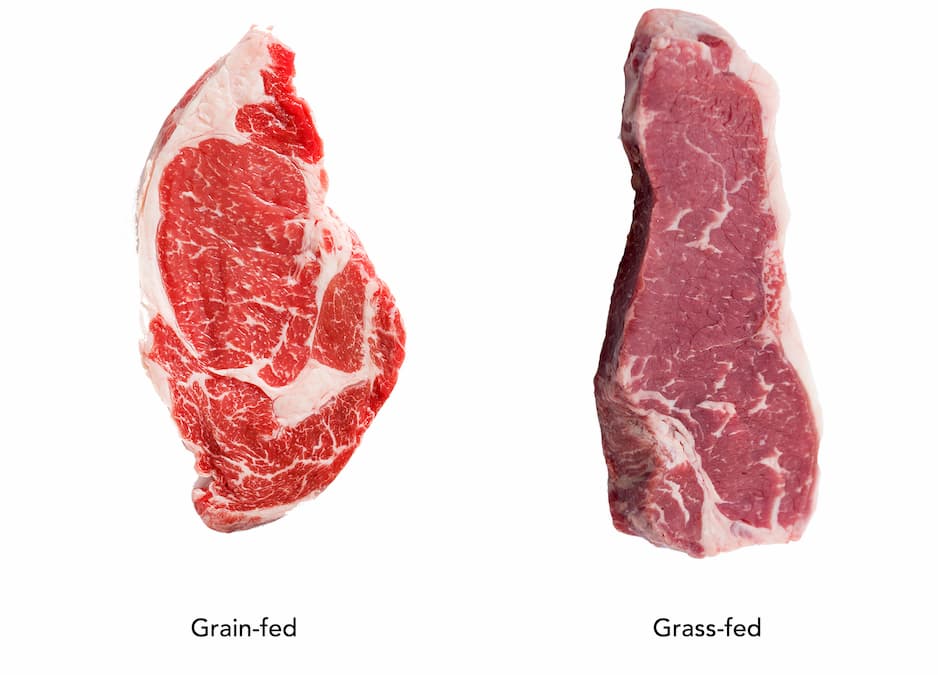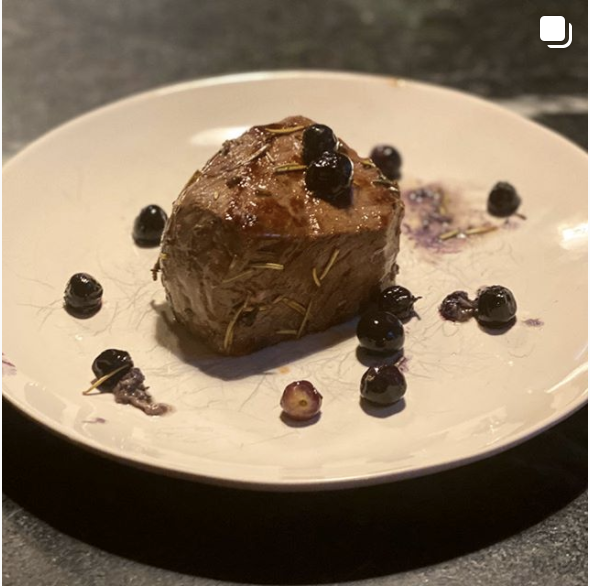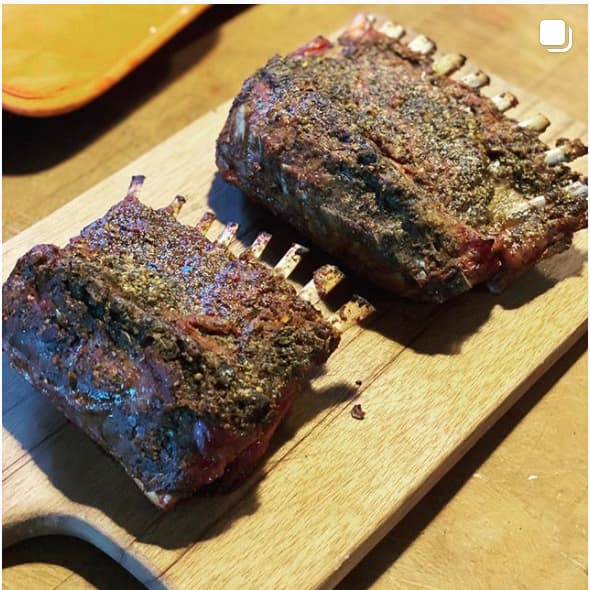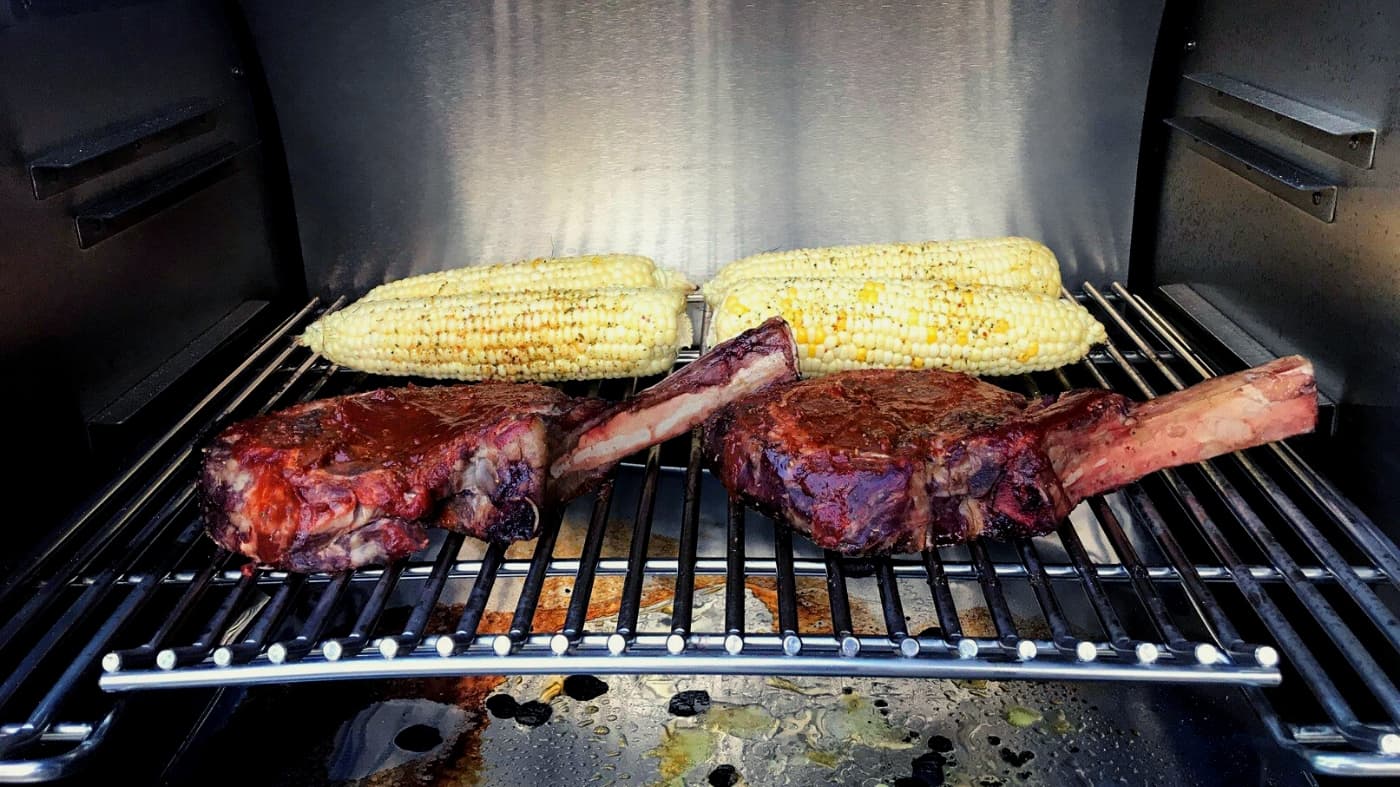June 2, 2020
It's (un)officially summertime, baby! After spending my Memorial Day, as most Americans do, fine-tuning my grillmaster skills and cooking up all sorts of mouth-watering delicacies for my family, I got to thinking about how grateful I am to be able to nourish my body with readily available meat from animals that were cared for and raised humanely, free to roam on open pastures, and fed precisely what their species was meant to eat.
Then, I realized that for lots of others out there, eating meat is a far different experience—and Memorial Day barbecues often involve feasting on grain-fed, inhumanely-raised, inflammation-promoting steaks, chicken legs, and brats straight from the feedlot.
The worst part about all of this is that most of the time, due to shady business practices meant to mislead and trick well-intentioned consumers, people don't even know that what they just bought for that BBQ wasn't truly “free-range” or “grass-fed.”
So I decided to put together a quick guide that'll help you to steer clear of misleading labels, optimize your summer BBQ grill game, and have you cooking up delicious and healthy cuts of meat in your backyard in no time.
In today's article, you'll discover everything you need to know for sourcing the absolute best, tastes-like-you-hunted-it-yourself meat out there—including why you should never buy meat from the supermarket, how to spot highly misleading (and shockingly legal) claims meat producers are putting on their labels to trick you into buying their inferior products, and where to buy grass-fed ribeyes that fall off the bone, pasture-raised/species-specific-fed chickens, mouth-watering/sustainably raised lamb, and beyond.
Tip 1: Don't Buy Meat From the Supermarket.
First and foremost, the number one thing you're probably expecting out of your meat is flavor. Yes, you understand the importance of health and nutrition, but what good is a healthy, grass-fed burger from a cow that lived its best life ever if it's bone dry and doesn't taste much better a McDonald's double cheeseburger.
One of the most important factors for reaping the maximum nutritional benefit from the meat you're eating is to ensure the animal it came from was fed a species-specific diet, which is basically the diet the animal naturally eats. This is nearly impossible to find at your local supermarket (yes even at Whole Foods!).
For example, the species-specific diet of a chicken is that of an omnivore. In the wild, chickens eat a variety of bugs, insects, grasses, and other vegetation. However, nearly all of the chickens you'll find at the supermarket are grain-fed, primarily with genetically modified corn and soy. You can clearly see it labeled on most packaging with the phrase “vegetarian-fed.” For whatever reason, people see this and think it's a good thing, but by labeling chicken “vegetarian-fed,” these farms are essentially telling you that their chickens are actually grain-fed. When chickens eat an omnivore diet that’s full of bugs, insects, grass, etc., they have a more ideal omega 3 to omega 6 ratio. Omega 6 is a pro-inflammatory micronutrient. Just spend some time reading the inflammation theory of disease, and you’ll see that 90 plus percent of disease arises from low grade, chronic inflammation.
Another big giveaway that a chicken is grain-fed is if you see “free-range” on the label. What “free-range” means in the industry is that there are 20,000 or more chickens stuck in a single warehouse where they have “access” to a small concrete patio. Visit any of these operations, and you’ll see that 99% of the chickens never even take advantage of the small concrete patio. “Free-range” is often the best you’re going to find at the supermarket, and it’s still terrible. The same exact rules apply to turkey and pork at the supermarket as these farms are also heavily reliant on grains as their main source of feed, mainly genetically modified corn and soy to be exact. Check out the video below for more information:
Another huge problem with grain-fed meats is that the grains they’re fed are grown with various synthetic biocides, such as glyphosate. When animals consume these grains, the dangerous chemicals build up in the fat, muscle, and organs of the animals you wind up eating. So now, not only are you getting increased inflammation because of the poor omega 3 to 6 ratio, but you’re also getting exposed to trace amounts of various harmful, cancer-causing chemicals, which again add to more inflammation. It’s a very toxic combo. Check out my article “Why You Can’t Get Away From The Toxin Glyphosate (& What You Can Do About It).” for more on glyphosate.
I haven’t even touched on all the antibiotics, beta-agonists, steroids, perspectives, and additives being used in meat production. For more on that subject, check out this study that compared US beef (where steroids and beta-agonists are legally allowed to be used) to Japanese beef (where the use of such drugs is illegal). Also be sure to check out this interesting study that found anti-depressants and banned antibiotics in feather meal, which comes mainly from chicken and turkey you find at your supermarket.
Tip #2: Don’t Fall For Misleading Grass-fed Label Claims.
“Grass-fed” beef is all the rage now. It’s fairly well known that it has a healthier nutritional profile compared to grain-finished beef, and it appears to be a sign of progress that you can actually find this stuff at your local ACME. But let’s take a closer look into what the phrase “grass-fed” actually means.
First and foremost, you may be surprised to hear that all cattle are grass-fed. I'll say that again: ALL cattle are grass-fed. So, when you see the grass-fed claim, it really doesn’t mean anything unique at all.
Cattle simply can’t be fed grain for their entire lives. What happens typically in a cattle-raising operation is that cattle are raised on grass for 80% of their lives where they roam the pasture and eat nothing but grass. Then, during the last 20% of their lives, they’re sent to a feedlot where they’re fed mostly grains.
The species-specific diet of cattle is grass and other forage. When you feed them grains, which isn’t part of their natural diet, it shoots the omega 6 content of the meat way up. Just like with the chicken mentioned above, too much omega 6 as compared to omega 3, will increase inflammation in your body. More inflammation equals more disease, gut issues, obesity, depression, etc.
Let's move on to beef grown overseas. A whopping 90% of grass-fed beef sold in the US is imported from other countries. What's the problem with this? For starters, a lot of the countries this beef is coming from simply don’t have the resources to go after farmers that aren’t living up the grass-fed and grass-finished labeling claims. Now, remember the shady business practices and misleading claims I mentioned in the intro? A lot of this beef is intentionally mislabeled as “Product of the USA.”
Yes, seeing a “product of the USA” label on your beef, sadly, isn't even enough to ensure that it's, in fact, a product of the USA. Are you pulling your hair out yet? Legally, farmers can import beef carcasses from Mexico, process and package them in California, then smack a “product of the USA” label on it and call it a day. This is 100% legal and happens all the time. So, “grown and harvested in the USA” can't even be trusted, as some companies are now even raising their livestock in the US, harvesting it in the US, shipping it to China for processing, then shipping it back to the US for sale!
Now, let's dive deeper into another misleading claim ranchers use to push their meat. Perhaps you already know that “grass-fed” doesn't really mean all that much and have been opting for “grass-fed, grass-finished” beef. Sorry to tell you, but I've got even more bad news. With the way our agriculture system works, ranchers can feed their cattle grass for 8-9 months, feed them grains for 3-4 months, finish them on a week of grass, then slap a “grass-fed, grass-finished” label on the package. So as you can see, seeing “grass-fed, “grass-finished,” “product of the USA,” or “grown and harvested in the USA” labels aren't as clear cut as they appear to be!
A quick tip to see past the fakes is look for beef that’s slightly purple in color. If the beef is red and has white fat, that beef has been fed grains. You don’t want to see red muscle and white fat. Red muscle tissue and white fat equal grain-fed beef, while darker, slightly purple muscle tissue and fat that is more yellow are good signs of grass-fed, grass-finished meat. See image below for an example:

There are a few slight exceptions to this rule, but it’s a good, general rule to follow. I imagine right now you're probably scratching your head wondering where to buy grass-fed beef that's actually 100% grass-fed. Don't worry, I'll get to that below.
Tip 3: Understand The Limits of “Certified Organic” Labels
Certified organic meat is more often than not simply factory-farmed meat, but with organic inputs. As mentioned above, good, high-quality meat comes from animals that are fed a species-specific diet and allowed to roam free on pasture.
So seeing a “certified organic” label on your eggs, poultry, or beef might appear to be a good thing, and it very well may be, but it doesn't guarantee the animals' feed is species-specific or that the animal had ample room to roam and graze.
Take certified organic free-range chicken for example. The “certified organic” label looks enticing, especially next to a carton of eggs that doesn't have that label. But “certified organic” can mean certified organic anything, and it almost always means organic grains, mainly organic corn and soy. As mentioned above, this is not what chickens are meant to eat, and if what you're eating is not eating a species-specific diet, it leads to a poor nutritional profile and typically a much higher omega 6 to omega 3 ratio—turning an otherwise healthy food into a pro-inflammatory food. It doesn’t matter if the grains are organic. A grain is a grain is a grain, and it's not what chickens (or most farm animals for that matter) should be eating.
Check out this article that goes more into how pasture-raised chicken eggs from hens fed a species-specific diet compare to confined, factory-farmed chickens fed grains. One study done at Penn State University found that pastured eggs had three times more omega-3s, 220 percent more vitamin E, and 62 percent more vitamin A than eggs from caged hens.
For more tips like these, including how to easily identify genetically-modified foods, the myth of safe pesticides, the differences between factory-farmed, organic, and biodynamic fruits and vegetables, the importance of staying away from farmed fish, how to source quality water and supplements, and more, I highly recommend reading Anti-Factory Farm Shopping Guide by Eugene Trufkin, as well as his guest article on my blog, “How Factory Farming In America Is Producing Nutrient-Void Food (And How You Can Navigate Your Way To Healthier Options).”
Where To Buy Grass-fed Beef (That's Actually Grass-fed)
By now you're probably thinking that high-quality, grass-fed, grass-finished meat that's grown in a regenerative, sustainable, ethical manner doesn't exist.
Well, I've got good news and bad news for you. The good news: yes, high-quality, ethical meat does indeed exist. The bad news: you can't walk to your neighborhood grocery store to get it.
Two great resources for finding legitimate 100% grass-fed operations where animals are fed a species-specific diet and allowed to live happy, healthy lives roaming on pastures are 1) the American Grassfed Association, whose standards and certification have been recognized as the leading definition and standard for grass-fed meat and dairy, and 2) eatWILD, the #1 clearinghouse for information on pasture-based farming and a state-by-state (plus Canada) directory of local farmers who sell their pastured farm and ranch products directly to consumers.
Where do I get my meat from? Here are my top SIX go-to sources for healthy meat:
1. White Oak Pastures
Regenerative agricultural practices, like those used at White Oak Pastures, focus on soil regeneration, biodiversity, improving the water cycle, enhancing ecosystem services, supporting biosequestration (the capture and storage of gas carbon dioxide), and much more. Check out the video below for more:
Regenerative agriculture has also been shown to be carbon negative. Because the animals live on the land in an ecosystem with plants, because they poop and pee on the land, they enrich the soil with nutrients, specifically phosphorus and nitrogen, which are needed for plants to develop big root systems. These bigger root systems allow the plants to pull more carbon dioxide from the environment into the roots.
Another benefit of regenerative agriculture is that they put multiple species on the same plot, which interrupts parasite life cycles. For example, the barber pole worm primarily affects sheep, and the brown stomach worm affects cows. When you put the two animals together, the lifecycle of those parasites is interrupted.
White Oak Pastures is a six-generation, 152-year-old family farm in Bluffton, Georgia that focuses on regenerative land management, humane animal husbandry, and revitalizing their rural community. They believe that radically traditional farming creates products that are better for the land and the livestock. White Oak Pastures operates on a zero-waste production system that utilizes each part of the animals they pasture raise and hand butcher on their farm. To get your hands on some grass-fed beef, goat, or lamb or pastured chicken, duck, or goose click here to order from White Oak Pastures.
2. Piedmontese Beef
 I recently discovered “Piedmontese Beef” (pictured right, click on the image to see a recipe for my potent “stem cell-boosting” steak and blueberries 1-2 combo). The Piedmontese breed of cattle originated in the Piedmont region of northwest Italy, where it was first discovered over 100 years ago among the region’s robust history of fine wines and rich cuisines. Prized for its noticeably heavy musculature, the Piedmontese breed’s unique genetic makeup means these cattle naturally develop a significantly greater muscle mass compared to conventional cattle. At the same time, muscle fibers remain tender without the need for excess marbling. The result? Consistently superior beef that’s both lean and tender.
I recently discovered “Piedmontese Beef” (pictured right, click on the image to see a recipe for my potent “stem cell-boosting” steak and blueberries 1-2 combo). The Piedmontese breed of cattle originated in the Piedmont region of northwest Italy, where it was first discovered over 100 years ago among the region’s robust history of fine wines and rich cuisines. Prized for its noticeably heavy musculature, the Piedmontese breed’s unique genetic makeup means these cattle naturally develop a significantly greater muscle mass compared to conventional cattle. At the same time, muscle fibers remain tender without the need for excess marbling. The result? Consistently superior beef that’s both lean and tender.
Certified Piedmontese is a healthier beef option that doesn’t sacrifice flavor or tenderness. The cattle, which are raised responsibly and carefully on family ranches across the Midwest, are healthier, too. They’re never given antibiotics, steroids, or hormones. They raise the rare Piedmontese breed through a ranch-to-fork approach that ensures traceability, environmental sustainability, humane animal handling, and responsible resource management at every step. Countless well-known chefs from across the country rave about the exceptional quality and flavor profile of this Certified Piedmontese beef. Click here and use code BEN20 to save 20% off any order from the good folks at Piedmontese Beef. If you're a fan if marbling fat and dripping oil from your beef, you probably won't find it in these lean cuts, but if you like lean cuts, which do quite well with cooking tactics like smoking and long marinades, or your gut doesn't do well with large boluses of fat, Piedmontese is a good choice.
3. Belcampo
Belcampo ships their regeneratively farmed, grass-fed, grass-finished meats and bone broths straight to your front down from their 30K acre ranch in pristine Mt. Shasta, California. Every single animal is ethically raised from birth to harvesting and they intensely focus on specifically choosing breeds for optimized flavor and health.
Belcampo raises their animals on their own farm and operates their own USDA-inspected and Animal Welfare Approved processing facility. Because they own their facility, they have implemented a strict coding system that allows full traceability, and they track all animals from birth to butchery to your plate. You always know exactly which animal each cut of meat comes from so you can feel good about its quality, integrity, and safety.
 They also employ low-stress animal handling practices for the animals, which include cattle, lamb, swine, chicken, and turkey. They work hard to provide their animals with the happiest life on the farm and are there when they’re born, with them every day on pasture, and make sure that they are handled in the most compassionate way when they transition to the processing facility.
They also employ low-stress animal handling practices for the animals, which include cattle, lamb, swine, chicken, and turkey. They work hard to provide their animals with the happiest life on the farm and are there when they’re born, with them every day on pasture, and make sure that they are handled in the most compassionate way when they transition to the processing facility.
The end result is a collection of mouth-watering cuts of meats and a unique lineup of everything from sweetbreads to liver to bone broth to giant bone-in ribeyes that rival the best ribeye I’ve ever had in my life. Click on the image to the left to check out the oregano, garlic, black pepper, cayenne, and cumin-rubbed lamb ribs from Bel Campo I cooked up last week. Get any of Belcampo's mouth-watering carnivore goodness by clicking here.
4. Thrive Market
Thrive Market sources 100% grass-fed, pasture-raised beef and ships it right to your door. Yes, many of the other farms I listed do the exact same thing, but ordering from Thrive offers some other perks like a huge selection of over 6,000 of the world’s best organic, non-GMO, non-toxic, and sustainable brands at 25-50% off retail. Every Thrive membership also sponsors a free one for someone in need and is 100% risk-free within your first 30 days of membership.
All of the Thrive Market beef comes from Osorno, Chile where grass is abundant and the climate is ideal for letting cows graze outdoors year-round. No chemicals, artificial fertilizers, or antibiotics are ever used. Low-density grazing methods are used to maintain the integrity of the precious land and soil.
Here’s why the grass-fed beef at Thrive Market is especially good:
- 365 days/year grazing
- 100% grass-fed
- Their cattle drink only fresh mountain spring water.
- No antibiotics or hormones
Click here to peruse Thrive Market's 100% grass-fed, pastured beef selection (and get up to $20 in credit when you join).
5. US Wellness Meats
My good friends at US Wellness Meats have been my longtime go-to source for all things meat. For 20 years, the family farms of US Wellness Meats have been producing the highest quality grass-fed and pasture-raised meats and other products. Their selection can't be beaten and includes everything from steaks to broths to jerkys to organ meats (from beef, bison, goats, venison, chickens, turkeys ducks, and beyond). Seriously, you'll be blown away by their selection when you check out their site and click “shop all.”
No matter what you order, their meats are guaranteed to be tender and tasty, without all the excess omega 6s of animals fed with grains in confinement. US Wellness Meats are full of nutrients that can only come from a fully grass-fed diet—omega-3 fatty acids, vitamin A, vitamin E, and CLA—and free of all the pesticides, hormones, and antibiotics that are found in most meats you'll find in the grocery store. Save 15% sitewide by clicking here and using code GREENFIELD at checkout. The bone-in French cut ribeyes are a particular favorite of mine, as are the organ meat sausages like liverwurst, braunschweiger, and head cheese.
6. FarmersCart
Tai Lopez, friend and previous podcast guest of mine, started his first farm business when he was just 19. When he later became an entrepreneur, he started buying farmland across the United States to secure a steady supply of food for himself, family, and friends. He was shocked to find out that some meat sold in the United States is processed in China or other countries overseas, and that the USDA isn’t required, by law, to disclose where the meat is processed.
Tai wanted meat that wasn’t from a factory, was free of pesticides and hormones, was from animals that were 100% raised on United States farmland, and was also of a higher quality than what you can find in grocery stores today. So he rolled up his sleeves and got to work to create FarmersCart, a secure and reliable source of grass-fed meat and pasture-raised chicken from farms across the United States.
FarmersCart sources meat from farms in Virginia and across the country to bring people only the best cuts of meat delivered straight to their door. All of the farms they work with follow their “3 Commandments”:
- Meat must be 100% raised and processed in the United States.
- Absolutely NO factory farming practices.
- No pesticides, hormones, or antibiotics used.
If you’re looking for food security and the only the highest quality meat for you and your family, check out FarmersCart here and use code BEN10 to save 10%. They recently sent me a box and I can vouch that this is quality, tasty meat – and more importantly, guilt-free. Tai also happens to be an understudy of regenerative farmer Joel Salatin, a former podcast guest of mine here and also a recent guest on the Joe Rogan show.
How To Get The Most Flavor Out Of Your Meat
If you're going to go through all of the trouble of hunting down good, high-quality meats, the last thing you want to do is waste it all by improperly cooking it. So as an added bonus, here's what I've found to produce the juiciest, bursting with flavor meat that I've ever sunken my teeth into.
From my steak recipe to the perfect ribeye to lamb ribs to beef & blueberries, I've experimented with just about every meat/spice/fruit/vegetable combo out there.
And no matter what spices or rubs or berries I use, nothing compares to a big, fat, juicy ribeye, rack of lamb, or filet cooked on a wood pellet grill. Seriously, do yourself and your tastebuds a favor and vow to never cook with a charcoal or gas grill again.
What's so special about a wood pellet grill?
Well, let me first explain what's not-so-special about charcoal and gas grills. It's pretty simple—charcoal and gas grills add no additional flavor to your food whatsoever, while cooking with wood has the potential to infuse thousands of flavor-producing compounds into your food. Here are a few examples of some of the flavor profiles you'll get from different woods:
- Applewood produces a smoky, sweet-with-a-hint-of-fruit flavor. It contains the strongest flavor of all the fruitwoods and works well for mixing with other wood types.
- Cherry lends a sweet, mild, and fruity flavor which can be light or intense, depending on the age of the wood.
- Hickory will give you a pungent, bacon-like flavor. This is the most commonly used wood. (You've surely heard of hickory-smoked bacon.)
- Mesquite has an intense, earthy flavor that's sweeter and lighter than hickory, but can also become overpowering.
- Pecan will give your food a subtly sweet flavor similar to hickory, but far less intense.
Aside from infusing your food with amazing flavor, most wood pellet grills out there are far more technologically advanced and easier to operate than traditional gas or charcoal grills. Digital controls and connectivity to your smartphone ensure that you get precise, consistent temperatures and allow you to control your grill from anywhere. Fans, a missing component of most traditional grills, are used in wood pellet grills to circulate heat and smoke, resulting in even, consistent cooking.
There are plenty of wood pellet grill companies out there, but in my opinion, the “Cadillac” of them all is Traeger. Actually, it shouldn't even be called a grill because it's far more than that. You can smoke, bake, roast, braise, BBQ, and yes, grill – with pure, hardwood flavor all in one machine that's super simple to use. They can be a bit pricey, but not much more than other grills out there that don't do half the stuff they do. Check out the lamb ribs I cooked on my Traeger just the other night, and click here for the recipe.

Anyways, you can check out Traeger grills here. I guarantee that you'll be pleasantly shocked that you could cook something so delicious in your own backyard. It vastly amplifies the flavor of any of the meat options I've given you above, and is one of the coolest gifts you can give yourself if you're a carnivory enthusiast like me.
Summary
So there you have it—everything you need to source healthy, sustainable, and ethical meat straight from the farm to your dinner plate – and to make it taste great!
To recap…
- Never, ever buy meat from the grocery store. The majority of it is grain-fed, feedlot-raised inflammatory garbage that is a faint resemblance of what nature intended it to be.
- Be wary of labels, including those that read “grass-fed, “grass-finished,” “product of the USA,” and “grown and harvested in the USA.”
- Understand that “certified organic” doesn't mean much more than the animal was fed something organic—usually grains and not grasses, bugs, and other foods their species was meant to consume.
To find healthy, truly grass-fed, humanely-raised, species-specific-fed meats, you can also check out the American Grassfed Association and eatWILD where you may be surprised to find a farm not too far from your backyard. Most local operations will ship directly to your front door. Better yet, if you're able to find something nearby, go pick it up directly from the farm to see for yourself where your food is coming from.
If you aren't lucky enough to find a farm nearby, the following companies will ship directly to your house and have all been vetted by yours truly:
- White Oak Pastures
- Piedmontese Beef (save 20% with code BEN20)
- Belcampo
- Thrive Market (get $20 in credit with my link)
- US Wellness Meats (save 15% with code GREENFIELD)
Bon Appétit!
Leave your comments, questions, thoughts, or favorite summertime BBQ recipes, meat sources and any other grilling or meat-related thoughts below!














I am looking for a place to sell grass fed beef on a weekly basis. About 10-12,000 lbs per week.
You can reach me at 708-870-2920
Ben, what brand(s) of wood pellets do you recommend?
I was reading about celulolitic material (grass, rice straw) that were treated with edible mushrooms to feed the cattle, what do you think about it I couldn´t find inforation about inflamatory respond or something related and I really want to know if that is a good option or not.
and thanks for the article it was really interesting
Ben Greenfield Fitness is literally one of the best weight loss community out there. I read it every day, and it helped me not only to lose weight but also maintain by body in great shape and keep me energized throughout the day! Hope this will help some others!
Publix sells White Oak Pastures products. I bought some of the ground beef a couple of weeks ago.
Hi Ben, thanks for your thoughts here. We also live in Spokane and have been Butcher Box customers for quite a while, but I’ve been thinking about sourcing some Piedmontese beef from two local producers, either Emtman or Owens Farms. Have you tried our local Piedmontese?
Not yet!
Hey Ben, appreciate the knowledge and list. I’m from Canada. Any suggested retailers or farms you’ve come across in your research?
Thanks!
if you live in southern ON, Nutrafarms is a solid option
I am waiting for cultured meat. Once this is available, I will probably go back to eating meat once or twice a week. I have no issue with eating meat a couple of times of a week from a health perspective. I just don’t like the killing and the other maltreatment animals go through to make it to our dinner plates.
I don’t think ethically based meat exists in today’s modern society for the most part. If you kill it (or support killing it). and you don’t need it to thrive / survive, it is not ethically based in my personal opinion.
We obviously have no idea whether cultured meat is healthier or unhealthier than butchered animals. Only time will tell. I know that many of you out there will complain about it being unnatural. However, much of modern medicine. functional medicine. holistic medicine, and biohacking is unnatural. “Unnatural” does not necessarily mean a practice is unhealthy.
Here is a recent article on cultured meat.
https://www.plantbasednews.org/lifestyle/vegan-egg-company-ventures-into-lab-meat
As someone who loves grilling this article was really helpful! Keep pumping out the awesome content Eugene!
Well there is another source, That is to buy locker beef. but you will need to keep a large and organized freezer. To access you can troll craigs list, contact a custom meat cutting mom and pop business (who does NOT sell meat directly) and ask who raises the best beef? or get in vehicle and drive out to where 5-50 acre parcels are common and knock on doors that have a few beef cattle in the pastures, most common are All Black or Red (Angus) or white faced red or black Hereford. Just because a gate is closed does not mean they don’t want anyone, just leave the gate in the same condition as found. You should make a site visit.
.
Here is how it works, you actually buy a live animal (or 1/2 or 1/4). This is to avoid USDA inspection requirement, so You will pay 3 fees typically, Rancher and meat cutter by the pound based on your portion of the hanging weight, The day the animal is killed it is taken directly to the meat cutter to hang in the cooler. When it arrives it will be weighed. Next you will pay your portion of the kill fee, these animals are typically shot on the farm where they are raised without transportation and the wait in the kill pens with the smell of blood in the air. these animals are killed instantly in a calm state. That is very important.
.
This will defiantly end up costing more than the grocery store, but less than the outfits that are selling small quantities and convenience. Hang weight will range $3.50-$6.00 to the farmer, $.60-.75 cut and wrap, kill fee $100 per animal. Remember the hang weight is going to hang for 10-14 days during which it will loose 10% due to dehydration, and you are buying all the bones and trim, which depending on the carcass and cuts 30-50% loss. Point is if the 1/2 weighs 350 you will not put 350 in the freezer. But you also can usually get organ and other body parts, which will be available day of slaughter. Bone broth bones and marrow bones are also usually available on request. You get the meat portioned and cut to what you want.
.
There is allot more in selecting a farmer and a processor. beware of any Dairy breed or Dairy breed mix. Holstien bull calfs are usually killed at birth, they are called “bummers”. some are sold for $5-$20. well they take 3 years to raise and have an extremely high waste and very low fat on a grass diet. Low fat to the point of being like shoe leather.
Yeah I wouldn’t even trust Tai Lopez knowing he’s all into the money. Lies about slot of stuff so I wouldn’t buy anything from him
Reading between the lines the best that I can…
Butcher Box didn’t make the list; I suspect you may have discovered that their beef is not truly and totally grass-fed?
Nothing between the lines. They're just currently on a waitlist. Their beef is 100% grass-fed and delicious.
Thank God! Was going to ask the same question as I have a subscription!
Yeah I was scared when I saw that since I have a subscription too. They are totally delicious and have some good deals for added cuts.
Do you have an opinion about Butcherbox?
Yes, their meat is delicious and 100% grass-fed. Unfortunately, they have a waitlist right now for new customers.
Thoughts on ButcherBox? Thumbs up or do you have concerns?
Anybody have experience, positive or negative? Any information to share?
They have a waiting list..
I personally LOVE Butcher Box, and in these times where meat has been hard to obtain in stores, it has come in super handy. Everything I’ve read about it says it’s 100% grass-fed AND finished, and the meat definitely looks the part, based on the photos and description in this article. I am curious to know Ben’s opinion of it though.
I’ve been a customer of Butcherbox for about six months and they are really good. However I read on their website today they’re all their beef comes from Australia!! Not saying that it’s a bad thing, but why are they shipping beef across the world when we could buy beef from various farms in the US that’s “grass fed” & “grass finished” organic etc. from USA farmers that is processed in the USA
It is 100% grass-fed.
ButcherBox is a great option. Currently not open to new customers though.
Ben, thank you for this amazing guide! What about fish? I always eat wild, not famed. Do you have any recommendations on the best places to get wild caught fish?
US Wellness Meats: https://bengreenfieldfitness.com/USwellnessmeats (code GREENFIELD will save you 15%)
Dear Ben, thanks for all you do! I love US wellness meats, especially their liverwurst…it’s the absolute best on the planet that I found. I discontinued ordering from them because they ship with Styrofoam packaging. Perhaps you might have better luck pressuring them to look for a more sustainable solution. My requests have fallen on deaf ears. Thanks again so much, Carl
PS please let me know if you have any luck so I can start ordering their liverwurst again :)